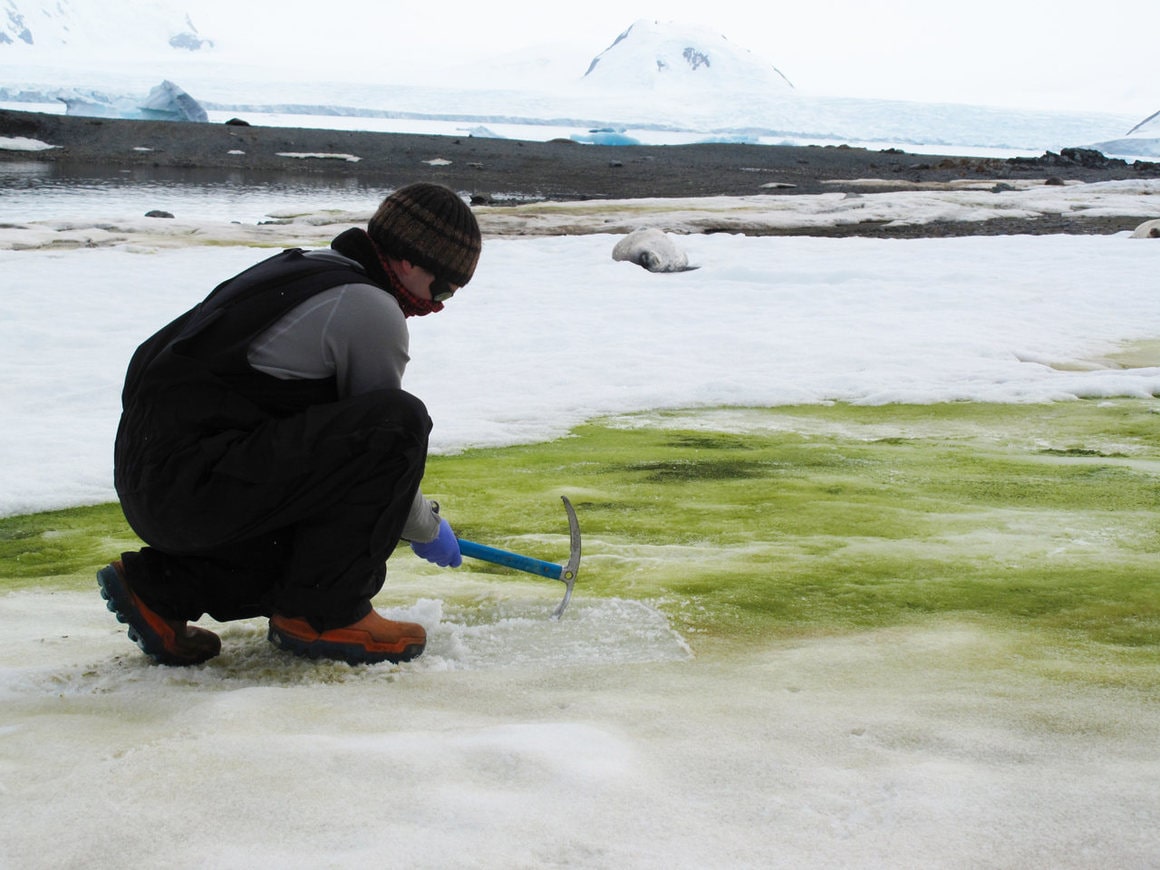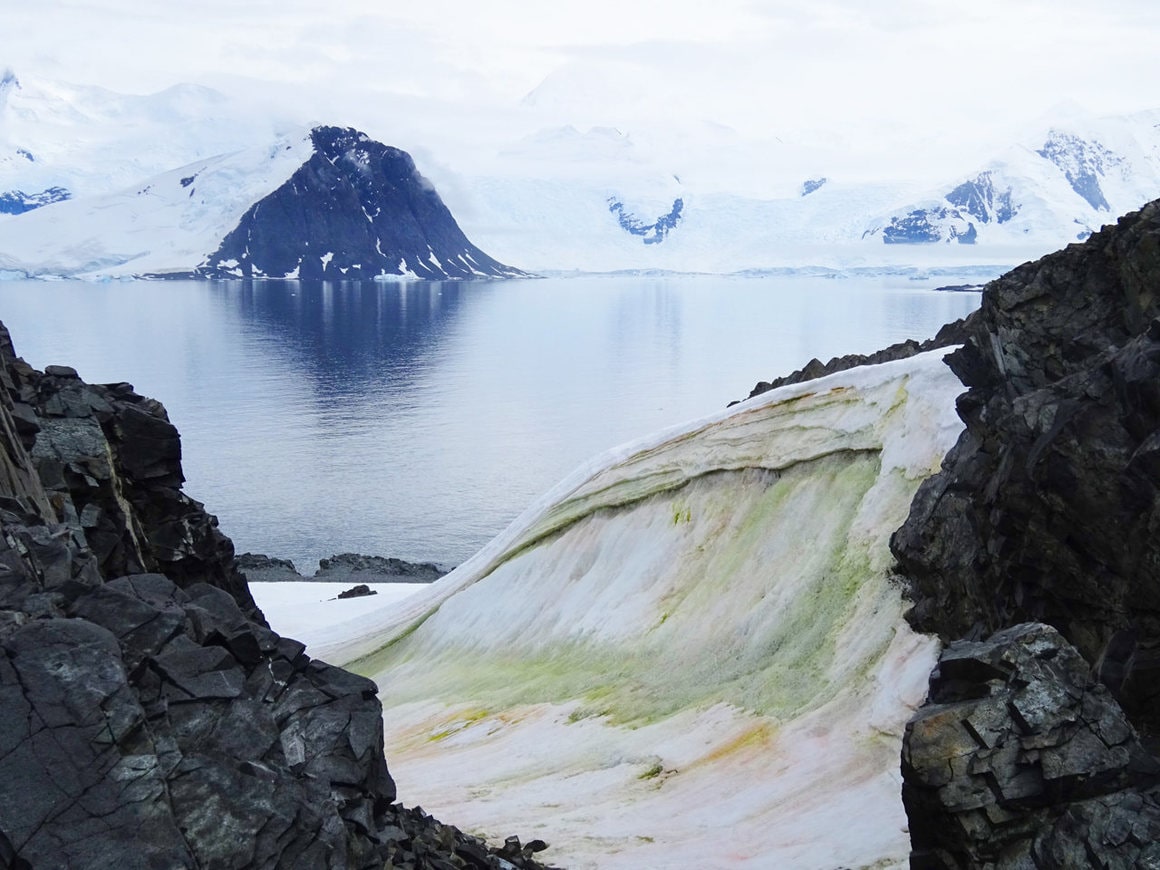
Antarctica has large patches of green snow that are visible from space using satellite imaging. This green snow is caused by algal blooms. The patches of green snow have been growing as the continent warms due to climate change.
Scientists mapped the prevalence of the blooms along the Antarctic peninsula and published their findings in late May. Most think of Antarctica as a barren, snowy wasteland populated by penguins and seals. But, during the warm season from December to February, algae, moss, and even grass flourish. Scientists focused their algae bloom mapping on green algae because it is easier to identify on remote imaging than yellow or red algae.

Green algae blooms have been growing as Antarctica warms due to climate change. Earlier this year, Antarctica experienced a record high temperature of 70℉. Warming temperatures cause snowmelt, which increases the algae’s habitat, as the microorganism needs liquid water. Algae blooms also tend to occur near penguin colonies and bird nests because poop provides valuable nutrients for the algae.
Interestingly, this green algae acts as a carbon sink for Antarctica. Scientists have found that the algae absorbs about 479 tons of carbon annually. Of course, on a global scale, this carbon absorption is almost insignificant, as the algae are only capable of absorbing the amount of carbon produced by 875,000 ten-mile car trips in one year.

The green algae has other effects on the environment as it reduces the albedo effect of snow. Because snow is white, it is able to reflect up to 95% of solar radiation. When snow becomes green, it can only reflect 45% of solar radiation. This can accelerate snowmelt, though scientists don’t think that this will have a significant effect on the climate because the algae only covers an area of about 1.9 square kilometers.
Antarctica’s green snow is having an effect on ecosystems as well. The algae interacts with other local microorganisms, such as fungi and bacteria. In fact, this green algae has already formed bonds with some fungal spores.